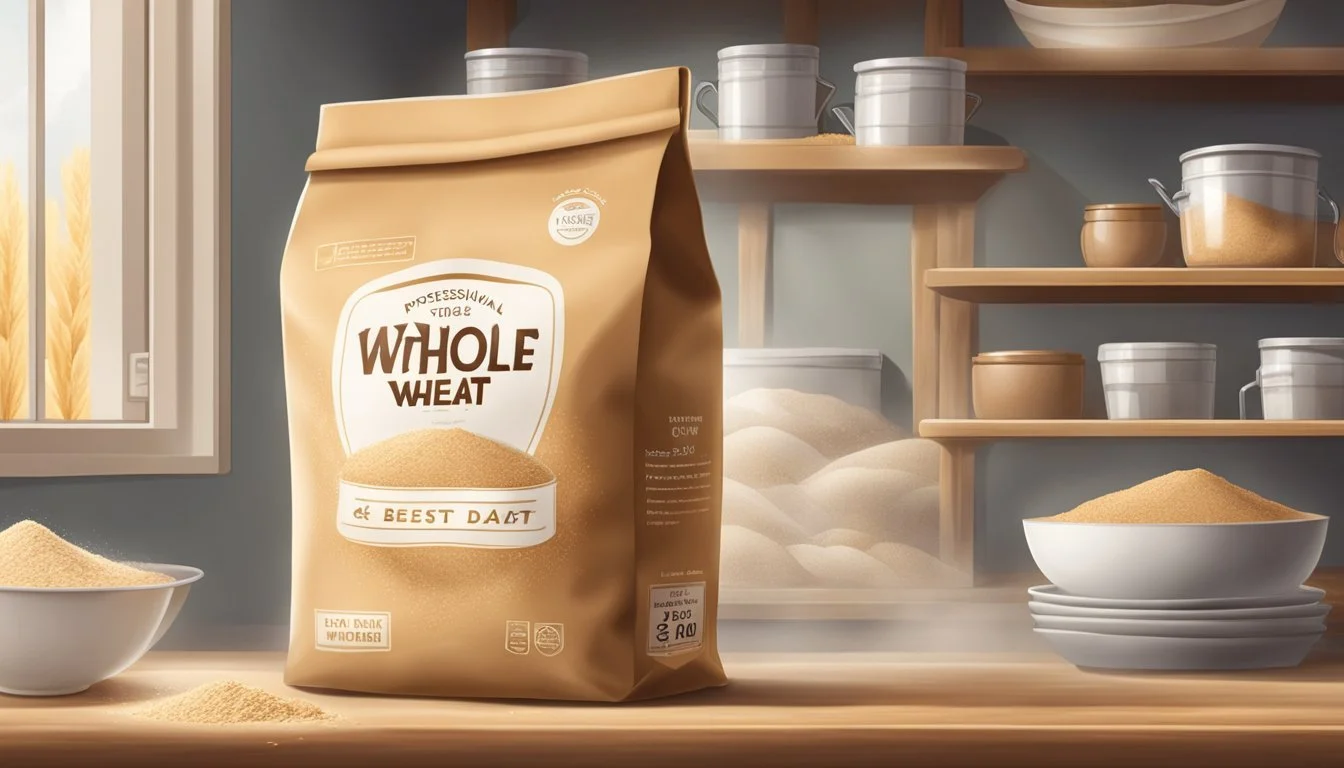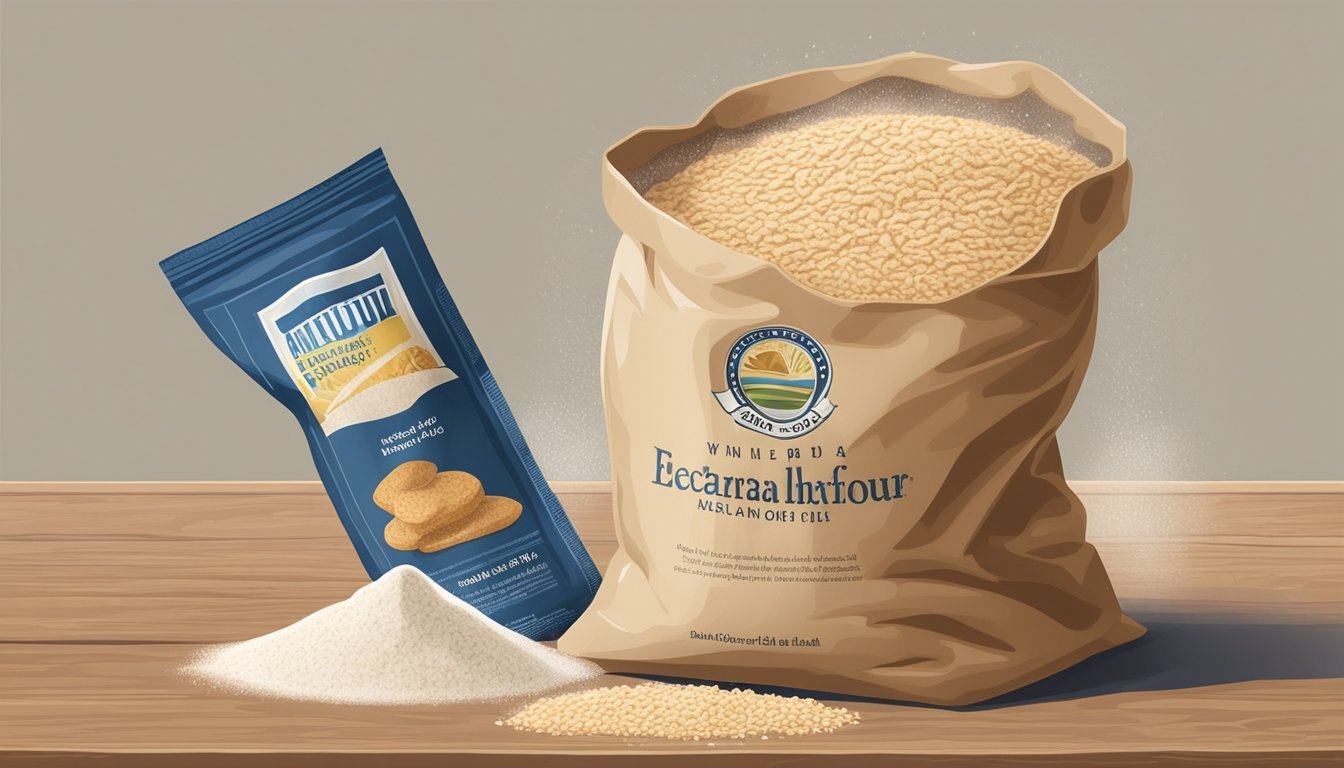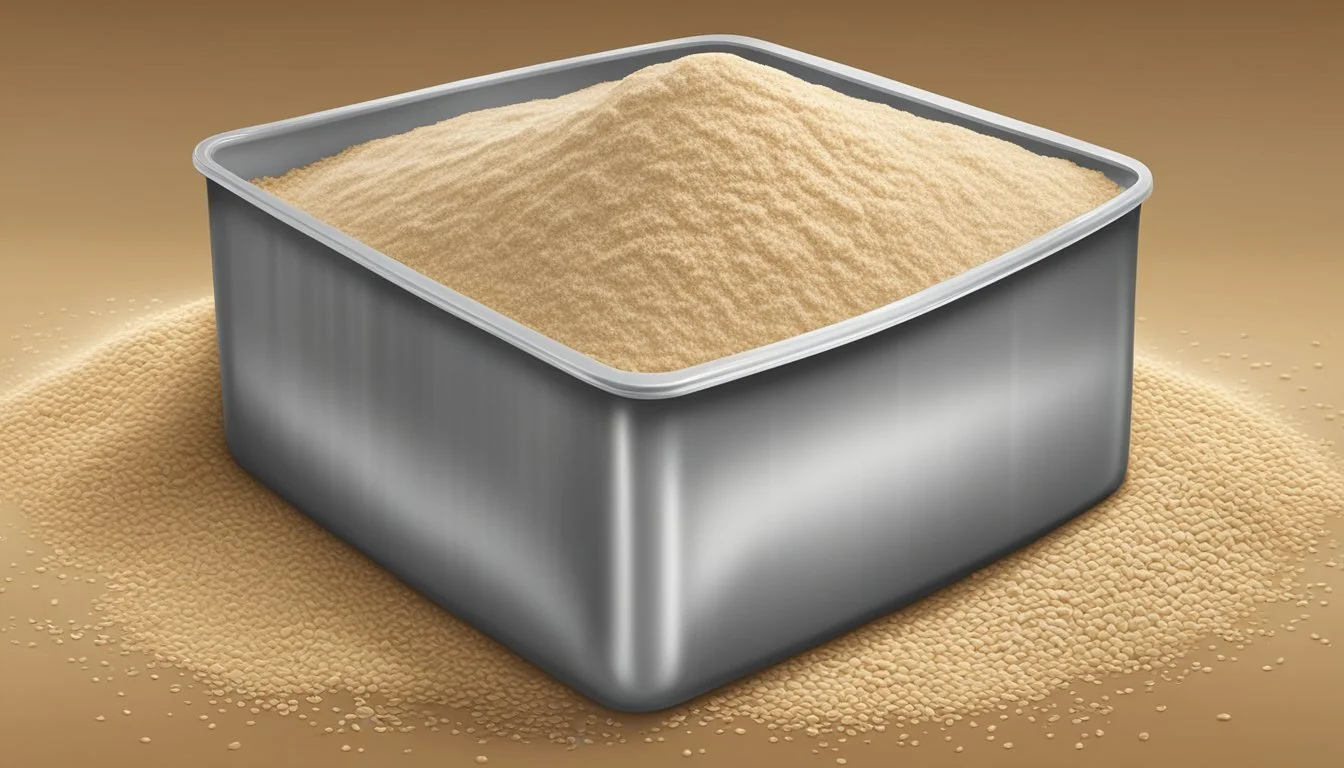How Long Does Whole Wheat Flour Last?
Shelf Life and Storage Tips
Whole wheat flour (how long does whole wheat flour last?) is a staple ingredient in many kitchens, prized for its nutritional value and rich, nutty flavor. Unlike refined flours, whole wheat flour includes all components of the grain—the bran, germ, and endosperm—which contribute to its higher fiber content and distinct taste. However, this also means that whole wheat flour contains oils from the germ that can go rancid, affecting its shelf life. Proper storage methods play a crucial role in preserving the freshness and extending the shelf life of whole wheat flour.
At room temperature, whole wheat flour typically lasts 6-8 months, assuming it is kept in a cool, dry place away from direct sunlight, which could speed up the degradation process. The flour's longevity is considerably influenced by storage conditions. By transferring the flour into an airtight container, moisture and contaminants are kept at bay, and the flour's quality is preserved.
For those looking to further extend the shelf life of their flour, refrigeration and freezing present viable options. When stored in the refrigerator or freezer, whole wheat flour can remain fresh for up to a year. This extended shelf life is contingent on the flour being sealed properly to protect it from absorbing any odors or moisture that could lead to spoilage.
Understanding Whole Wheat Flour
This section delves into the fundamental components of whole wheat flour, its nutritional aspects, the differences from other flours, and how to distinguish whole wheat flour based on its specific characteristics.
Composition and Nutritional Profile
Whole wheat flour retains all parts of the grain: the bran, germ, and endosperm, making it a whole grain flour. This composition ensures that it carries a wealth of nutrients including high levels of fiber, vitamins, and protein. The presence of the germ also contributes to a higher fat content compared to white flour.
Fiber: Essential for digestive health.
Vitamins: B vitamins, among others.
Protein: Contributes to muscle repair and growth.
Fat: Natural oils present due to the wheat germ.
Comparison with Other Flours
Whole wheat flour is distinct from white flour, which has been refined to remove the bran and germ, losing many nutrients in the process. Specialty flours like coconut flour and almond flour offer alternatives for those with gluten intolerance, however, they carry a different nutritional profile and fat content. Gluten-free flours are crafted to omit gluten, while self-rising flour has added leavening agents. Compared to nut flours, whole wheat flour typically has lower fat contents and a more neutral taste.
Flour Type Gluten Content Nutrient Profile Fat Content Whole Wheat Flour High Rich Moderate White Flour High Lower Low Coconut Flour Gluten-Free High Fiber High Almond Flour Gluten-Free High Protein High All-purpose Flour High Moderate Low Self-Rising Flour High Enriched Low Gluten-Free Flour Gluten-Free Varied Varied Nut Flours Gluten-Free High Nutrients High
Identifying Whole Wheat Flour
When identifying whole wheat flour, look for a color that is typically darker than all-purpose flour, due to the bran content. Its texture can feel slightly grainy or course given the presence of whole grain elements. One can generally expect whole wheat flour to have a more robust flavor profile and may observe slight lumping due to its natural oils and moisture absorption.
Color: Light brown to dark tan.
Texture: Coarse, grainy.
Appearance: May have small, visible flakes of bran or germ.
Shelf Life of Whole Wheat Flour
Whole wheat flour has a considerably shorter shelf life compared to processed flours due to its higher oil content, which can lead to rancidity. Proper storage conditions are critical to maintaining freshness and quality.
Factors Affecting Shelf Life
Several key elements influence the longevity of whole wheat flour:
Temperature: Flour should be kept in a cool environment, as heat accelerates spoilage.
Moisture: Exposure to humidity can introduce moisture, leading to spoilage and growth of mold.
Light: Direct light can degrade the quality of the flour over time.
Air: An airtight container prevents oxygen from spoiling the flour.
Storage Conditions: A dark, dry place is ideal for preserving the freshness of flour.
By addressing these factors, the shelf life of whole wheat flour can be maximized, reducing food waste.
Typical Expiration Timeline
To understand how long whole wheat flour lasts, consider the following typical timelines based on storage conditions:
Pantry (Room Temperature):
Freshness and quality can begin to decrease after approximately 3-8 months.
Fridge:
Generally maintains quality for about 6-8 months.
Freezer:
Best quality lasts around 1 year; safe to use beyond this time if properly stored.
Always check for an expiration date or a best-by date and label containers with the date of storage to track shelf life. While whole wheat flour can remain safe beyond these periods, the best quality is found within these time frames.
Storage Guidelines
Proper storage extends the shelf life of whole wheat flour significantly. This section covers the conditions and methods that preserve flour quality and longevity.
Optimal Storage Conditions
To maintain freshness, whole wheat flour should be stored in a cool, dry place away from direct light and heat. A pantry that stays at room temperature or slightly cooler is ideal. Exposure to moisture and air can lead to spoilage, so the selected storage environment must minimize these factors.
Storage Methods Comparison
Airtight Containers: Whole wheat flour stores best when kept in an airtight container, such as a sealable plastic bag or container, to prevent exposure to air and moisture, which can degrade quality.
Storage Location Expected Shelf Life Pantry 1–3 months Refrigerator 3–6 months Freezer 6 months to 1 year
Sealing and Temperature:
Pantry: Containers should be sealed tightly and placed in a dark, cool part of the pantry.
Refrigerator/Fridge: For longer storage, refrigeration is advisable, especially if the flour won't be used quickly.
Freezer: Freezing flour can extend its shelf life up to a year, provided it's stored in an airtight and moisture-proof container.
It's important to note that transferring flour to an airtight container, regardless of where it is kept, is crucial for maintaining its shelf life. Regular checks for signs of spoilage, such as an off smell or changes in texture, should be conducted to ensure the flour remains suitable for use.
Detection of Spoilage
Detecting spoiled whole wheat flour is contingent upon observing its sensory characteristics, physical conditions, and being aware of the health implications of consuming rancid flour. Prompt detection can prevent consumption that may lead to foodborne illnesses.
Sensory Indicators of Rancidity
Whole wheat flour when fresh carries a neutral or slightly nutty aroma, and has a bland or slightly earthy flavor. Detecting rancidity in flour involves:
Smell: Sniffing the flour for an off odor indicative of rancidity. Fresh flour should not have a sharp, sour, or musty aroma.
Taste: A small taste test for an unexpectedly bitter flavor, a sign of aging and oxidation, which signals spoilage.
Physical Signs of Deterioration
The physical appearance of whole wheat flour can indicate its quality and freshness. One should inspect the flour for:
Texture: Fresh flour is typically soft and powdery. Any lumpiness can suggest moisture intrusion, which can foster mold growth.
Color: A change in color, becoming darker or off-shade, can reveal aging and potential spoilage.
Mold: Visible signs of mold or any other organic growth are clear indicators that the flour is unfit for consumption.
Health Risks of Spoiled Flour
Using spoiled flour can pose health risks, including food poisoning. It may contain:
Harmful bacteria, such as E. coli, which can cause symptoms like diarrhea and vomiting.
Mycotoxins, toxins produced by molds that can have long-term effects, like cancer or liver disease.
Consumers should test and inspect their whole wheat flour regularly to ensure it maintains its quality and freshness, thereby upholding food safety standards.
Maximizing Flour Longevity
To ensure that whole wheat flour retains its quality and nutritional value, precise storage and handling techniques must be adopted. This will extend the flour's shelf life well beyond its best-by date without sacrificing the quality for future baking and cooking.
Proper Usage and Handling
When using whole wheat flour, maintaining its freshness is paramount. Flour should be kept in an airtight container to prevent exposure to air and moisture, which can degrade its quality. It's crucial to use flour from the current opening rather than mixing new and older flour. After each use, ensure that the container's seal is secure.
For optimal storage conditions, place whole wheat flour in a cool, dark, and dry place such as a pantry. This protects it from temperature fluctuations and light, which can accelerate degradation. Labeling the container with the date of purchase and best-by date will help in tracking the flour's age and freshness.
Refrigeration and Freezing Techniques
Refrigeration can significantly extend the flour's shelf life, especially in warmer climates or during the summer months. When storing whole wheat flour in the refrigerator, it should remain in an airtight container to prevent it from absorbing odors and moisture.
For long-term preservation, freezing is an optimal choice. Whole wheat flour can be stored in the freezer in a sealed airtight container or a resealable plastic freezer bag, which can maintain its quality for up to a year. Before using the frozen flour for recipes, allow it to reach room temperature to ensure accurate measuring and to prevent any condensation that could affect the quality of the baking.
Troubleshooting Common Flour Issues
Proper storage and handling of whole wheat flour can prevent common problems associated with its use. Ensuring flour maintains its quality and safety for consumption is paramount. This section discusses practical strategies to prevent deterioration and spoilage.
Dealing with Pests
Pests such as bugs and insects are attracted to flour. To keep pests at bay:
Store flour in an airtight container.
Regularly check the pantry for signs of infestation.
Clean the storage area often to remove any spilled flour or food residues.
Preventing Flour Clumping
Clumping occurs when moisture enters the flour. To prevent flour from becoming lumpy:
Ensure flour is stored in a cool, dry place.
Use desiccants or silica gel packets in the storage container to absorb excess moisture.
Before use, sift the flour to break up any clumps.
Addressing Quality Concerns
The freshness and quality of flour can diminish over time:
Conduct a smell test; rancid flour will have an off odor.
Use flour within the recommended shelf life which is typically 6-8 months at room temperature or up to one year if frozen.
Note changes in texture or color which may indicate spoilage.
Avoiding Health Hazards
Consuming expired flour can lead to food poisoning. To avoid health risks:
Discard flour showing signs of spoilage or insect activity.
Keep the storage area clean to prevent contamination.
Use flour before its best-by date for safety and optimal quality.






